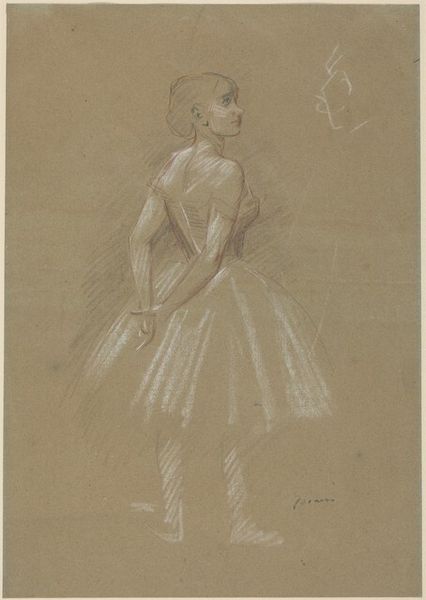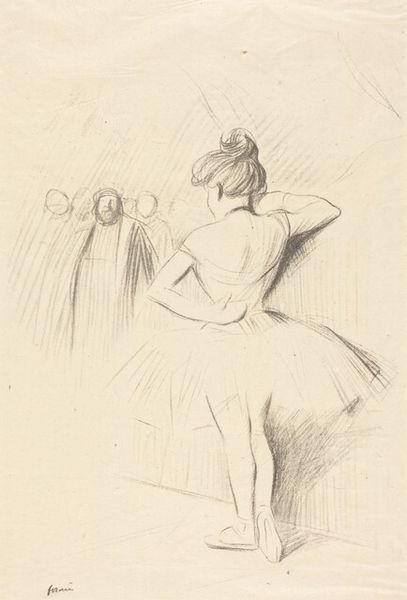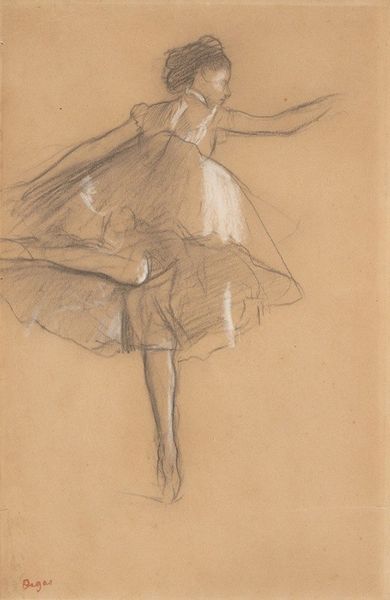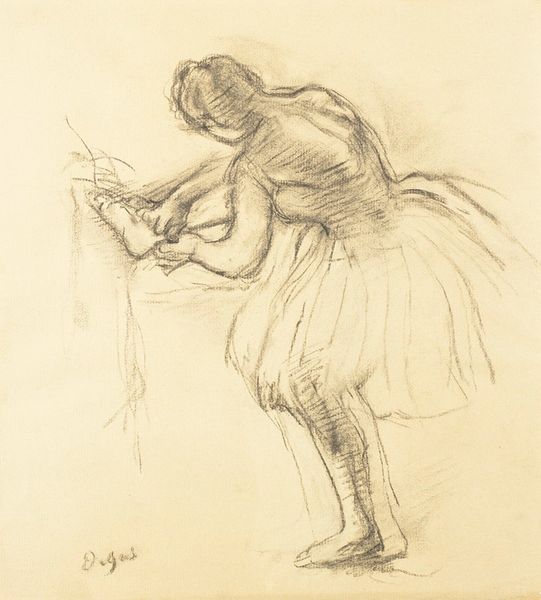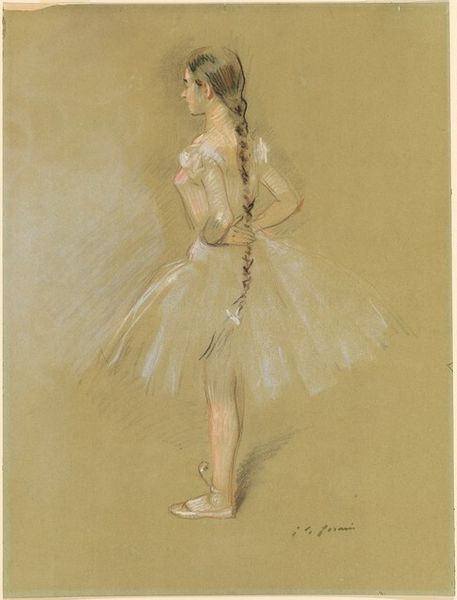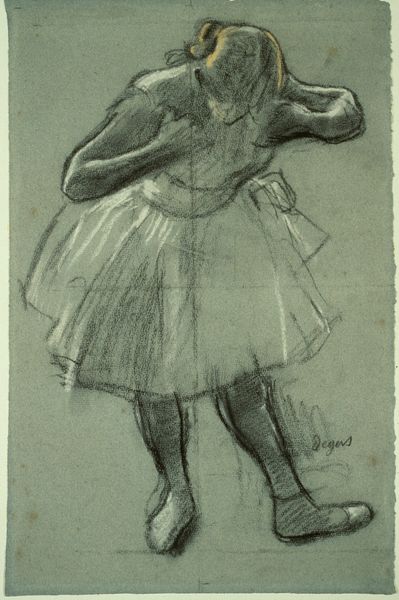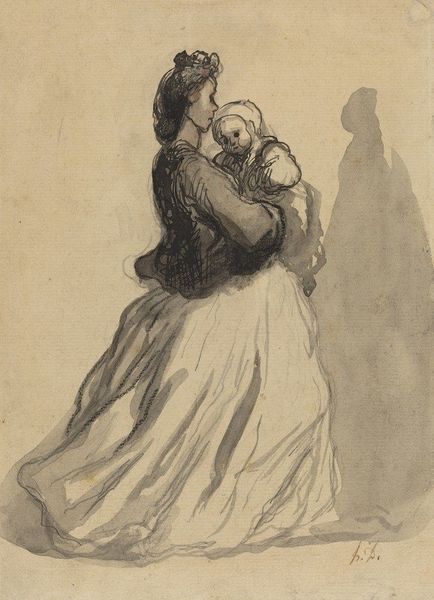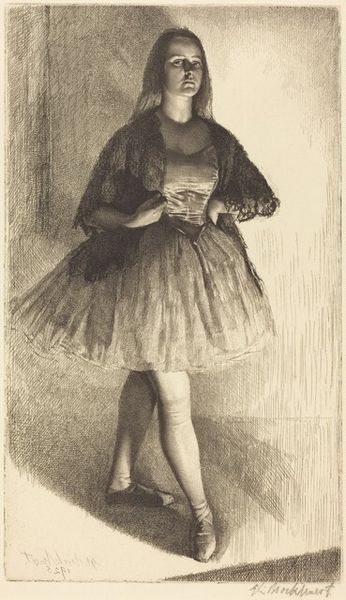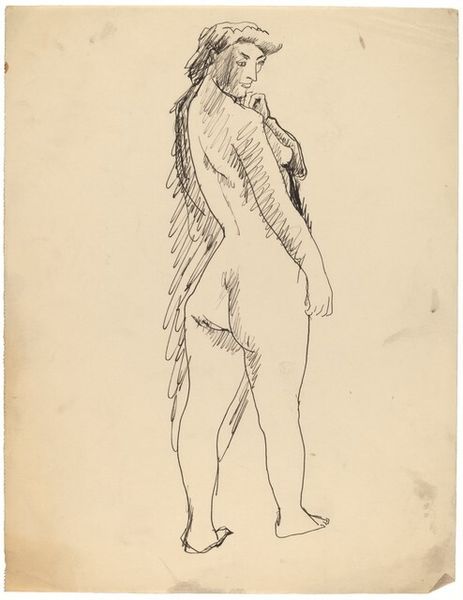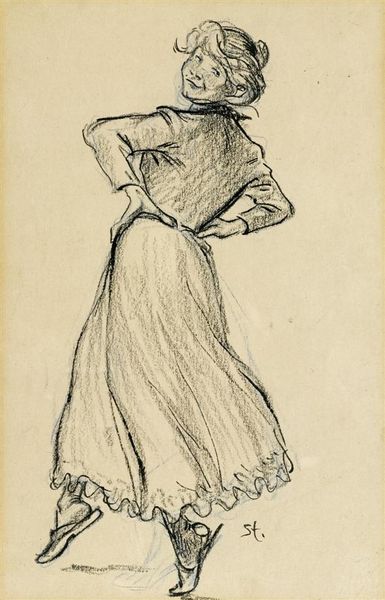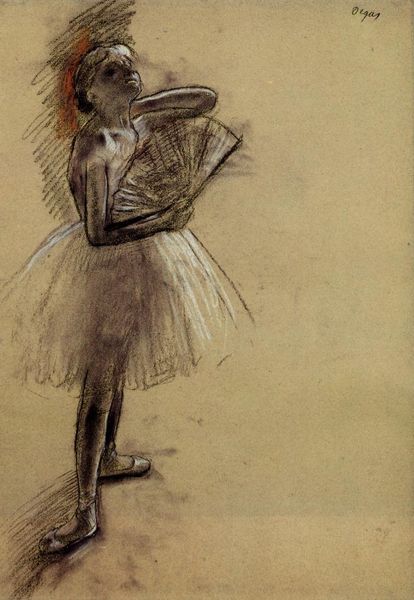
Copyright: Public Domain: Artvee
Editor: Here we have "Danseuse debout, le bras droit levé," or "Dancer Standing, Right Arm Raised," a drawing by Edgar Degas, dating back to 1880. It appears to be rendered in pencil and pastel on paper. The texture really stands out to me—almost like I can feel the roughness of the paper. What strikes you about this piece? Curator: I'm drawn to how the drawing reveals Degas’s labor. You see the materiality of the pencil, the strokes building form, especially in the tutu. This isn't just an image; it’s a record of the artistic process, a moment in the studio made visible. How do you think this reveals Degas' relationship with the traditional subject matter of ballet? Editor: Well, it seems to humanize the dancer, depicting a moment of practice or preparation, rather than performance. But how does focusing on materials challenge the conventional view of ballet as ‘high art?’ Curator: By drawing our attention to the labor and process that creates the image of the ballerina, and even her craft! The focus shifts from the idealized image of the dancer to the means of production - both hers and the artist’s. It acknowledges the immense amount of physical and artistic labor needed to create the *idea* of effortless beauty. Consider, what social class did these dancers typically belong to? How did that interplay with their profession and the art world's patronage? Editor: That makes me think about how many of these dancers were working-class individuals, essentially laborers using their bodies, with the finished "product" being the ballet performance and the sketches like these perhaps serving as byproducts in a way. Curator: Precisely. This piece invites us to consider the means of production inherent in both the art object and the ballet itself. We are confronted with the conditions of labor and consumption that surround the dancer, the artwork and, ultimately, us, the viewer. Editor: I never thought of it that way before. Looking at it through that lens really adds another layer of complexity to the artwork! Curator: Indeed. It encourages us to look beyond the surface and examine the underlying structures and material conditions that shape artistic creation.
Comments
No comments
Be the first to comment and join the conversation on the ultimate creative platform.
